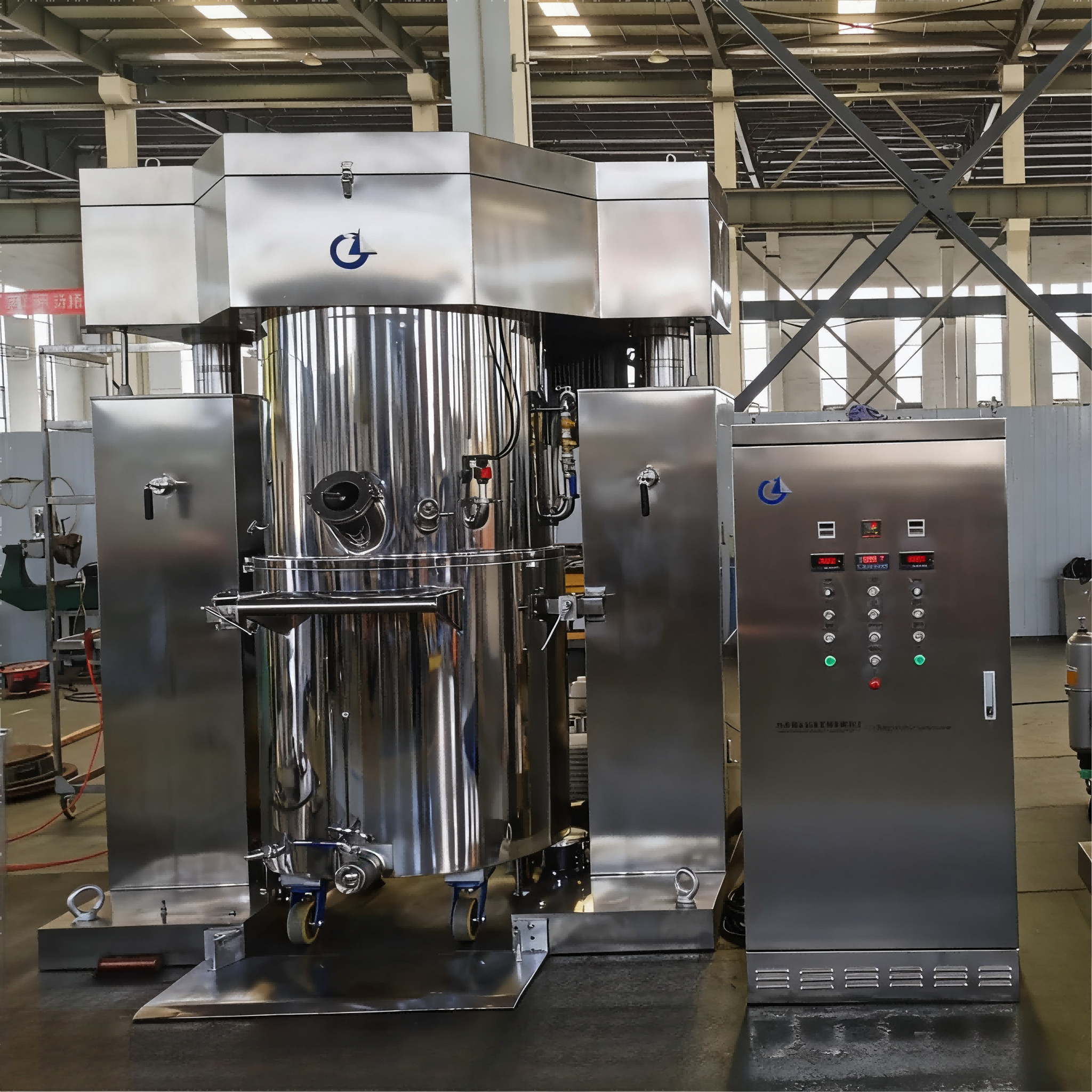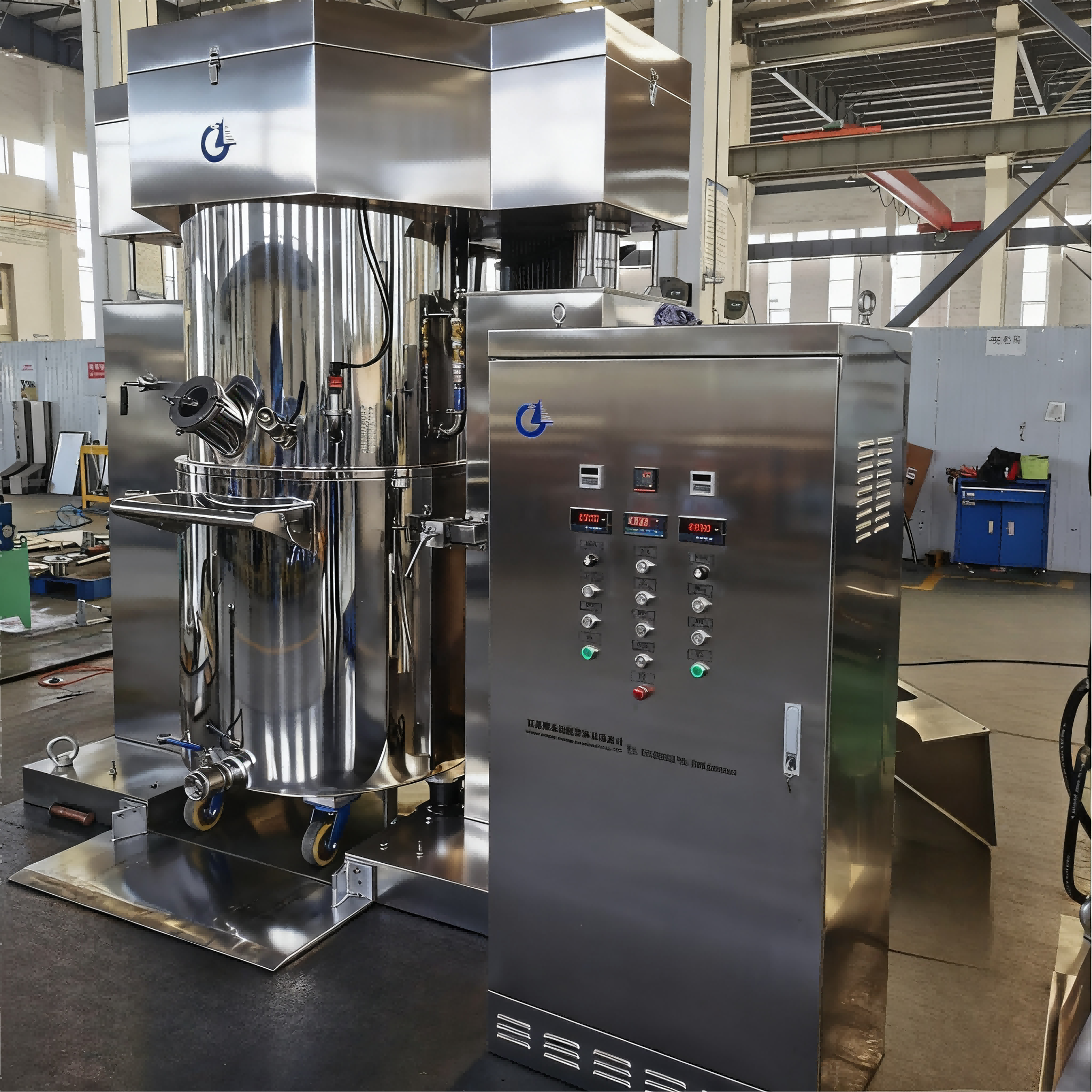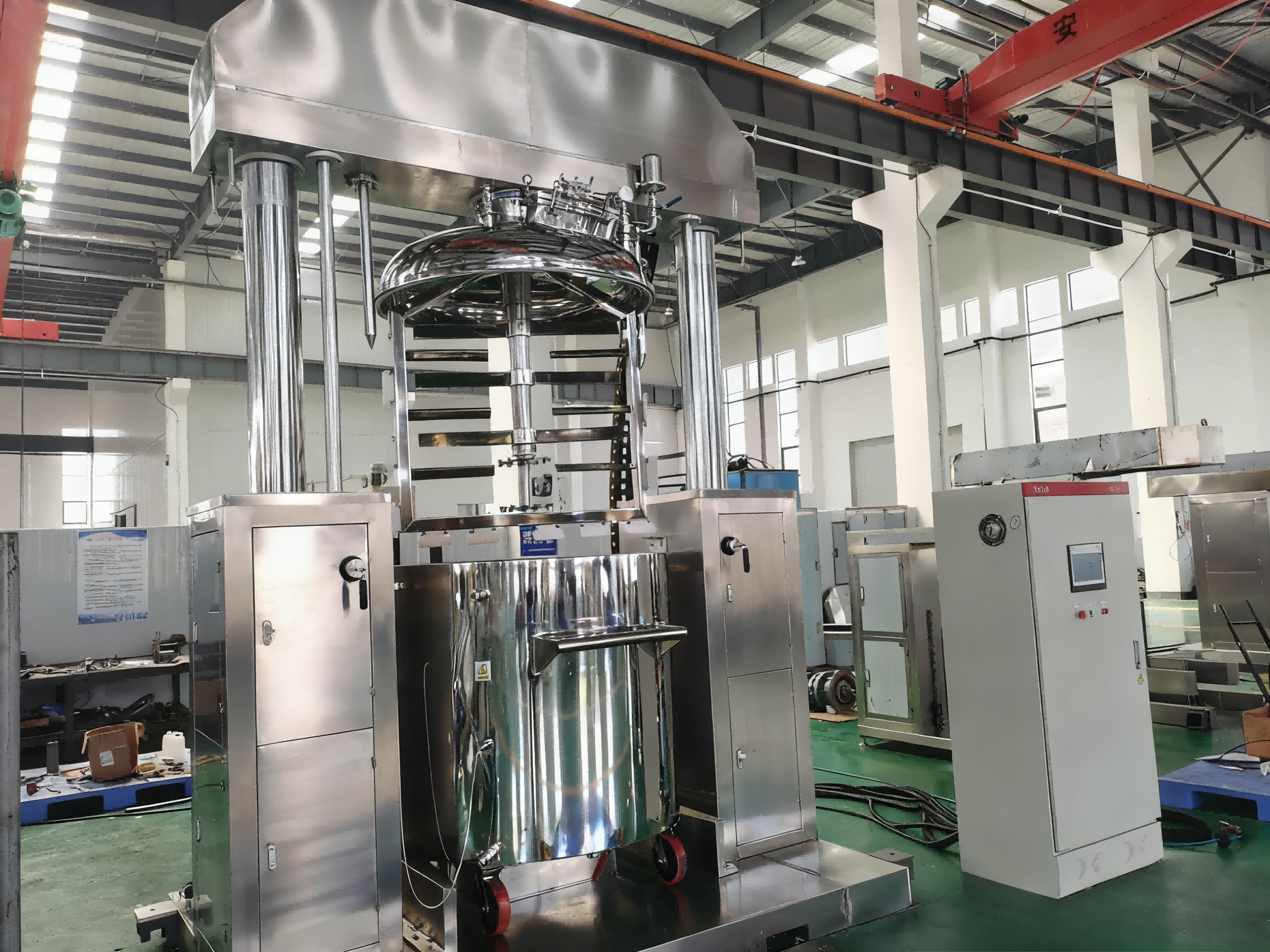Working Process of Double Planetary Mixer
Working Process of Double Planetary Mixer
Double planetary mixers, featuring the composite motion of dual mixing paddles—revolving around the center of the mixing bowl while rotating on their own axes—achieve dead-angle-free mixing of high-viscosity and high-solid-content materials. They serve as core equipment in high-end manufacturing fields such as adhesives, composite materials, and sealants. Their working process must align with equipment characteristics and process requirements, and adopt four-stage standardized operations to balance mixing efficiency and product stability.
1.Pre-Operation Preparation: Laying the Foundation for Safe Operation
The preparation phase requires comprehensive verification of "equipment - materials - environment". On the equipment front, focus on inspecting the integrity of the polished inner wall of the mixing bowl, dual mixing paddles (commonly a combination of blades and dispersing discs), and mechanical seals to ensure no scratches, deformation, or leakage. Activate the hydraulic lifting system to test the smoothness of the mixing frame's lifting and lowering, and verify the normal functioning of functions such as speed adjustment, temperature display, and emergency shutdown on the control panel—with particular attention to checking motor insulation and grounding reliability.
For material preparation, accurately weigh solid and liquid raw materials according to the formula. Pre-disperse easily agglomerated powder fillers, and pre-adjust resin-based materials requiring temperature control to the process temperature (usually within ±5℃). In terms of the environment, clear obstacles in the operation area to ensure good ventilation. If flammable and explosive materials are involved, confirm that electrostatic grounding devices and explosion-proof electrical appliances meet standards.
2. Accurate Feeding: Controlling Initial Mixing Conditions
The feeding process must follow the principle of "liquids first, solids later; thin first, thick later" to avoid material agglomeration. First, inject low-viscosity liquid raw materials through the feeding port, start the low-speed revolution of the mixing paddles (5-15 rpm) to form a vortex, then add solid raw materials in 3-4 batches with an interval of 2-3 minutes between each batch to ensure uniform dispersion of solid particles. If equipped with a side-entry high-speed disperser, it can be turned on simultaneously (rotating speed 800-1500 rpm) to assist in breaking up small agglomerates.
After feeding, close the bowl cover and fasten the safety lock, then set core parameters through the PLC control system: adjust the revolution (20-60 rpm) and rotation (50-150 rpm) speeds according to material viscosity—for high-viscosity materials, adopt the "low-speed start, step-by-step speed increase" mode; set the mixing time (15-90 minutes); if temperature control is required, adjust the jacket water or oil temperature to the process range (room temperature to 300℃); preset the vacuum system to above -0.095 MPa (for materials requiring defoaming).
3. Core Mixing: Achieving Material Homogenization
The mixing phase is the core of the process, requiring real-time monitoring of three dimensions: "working condition - materials - system". When starting the equipment, first lower the mixing frame to the working position (5-10 mm between paddles and bowl bottom) via the hydraulic system, then start the revolution and rotation drive devices in sequence. During operation, observe the material flow state through the sight glass, and record the current change of the mixing motor (which indirectly reflects viscosity and mixing degree)—the current fluctuation range must be controlled within ±5% of the rated value.
Temperature monitoring is particularly critical. Track the temperature in real-time with an in-tank thermocouple; when the deviation exceeds ±5℃, correct it by adjusting the jacket medium flow to prevent material degradation due to overheating or agglomeration due to overcooling. For gas-containing materials, start the vacuum system in the middle of mixing, maintain a vacuum degree of -0.095 MPa to -0.1 MPa for 10-15 minutes, and cooperate with the shear force of the paddles to eliminate bubbles. In case of abnormal noise or vibration, trigger the emergency shutdown immediately to check for paddle jamming or bearing wear.
4. Discharging and Maintenance: Ensuring Continuous Equipment Operation
After the mixing program ends, first stop the mixing device, raise the mixing frame to a safe height, then open the pneumatic discharge valve. For materials with viscosity >10000 mPa・s, activate the bowl tilting mechanism (tilting angle ≤90°), and use a dedicated silicone scraper to assist in discharging—controlling the residue amount below 0.1%.
For cleaning, select a compatible solvent based on material properties: rinse epoxy resin with acetone, wipe silicone with white spirit, then rinse the bowl interior and paddles with a high-pressure spray device, and finally dry with a lint-free cloth. In the maintenance phase, inspect the mechanical seal end face, apply special grease, tighten loose connectors, turn off the main power and medium valves, then fill out the equipment operation record and mark the next maintenance time.
This standardized process not only gives full play to the mixing advantages of the double planetary mixer but also ensures batch stability of products through full-process quality control, providing core support for precision production in high-end manufacturing.
News
- Latest News
- Solutions
- FAQ
Recommend Products
-
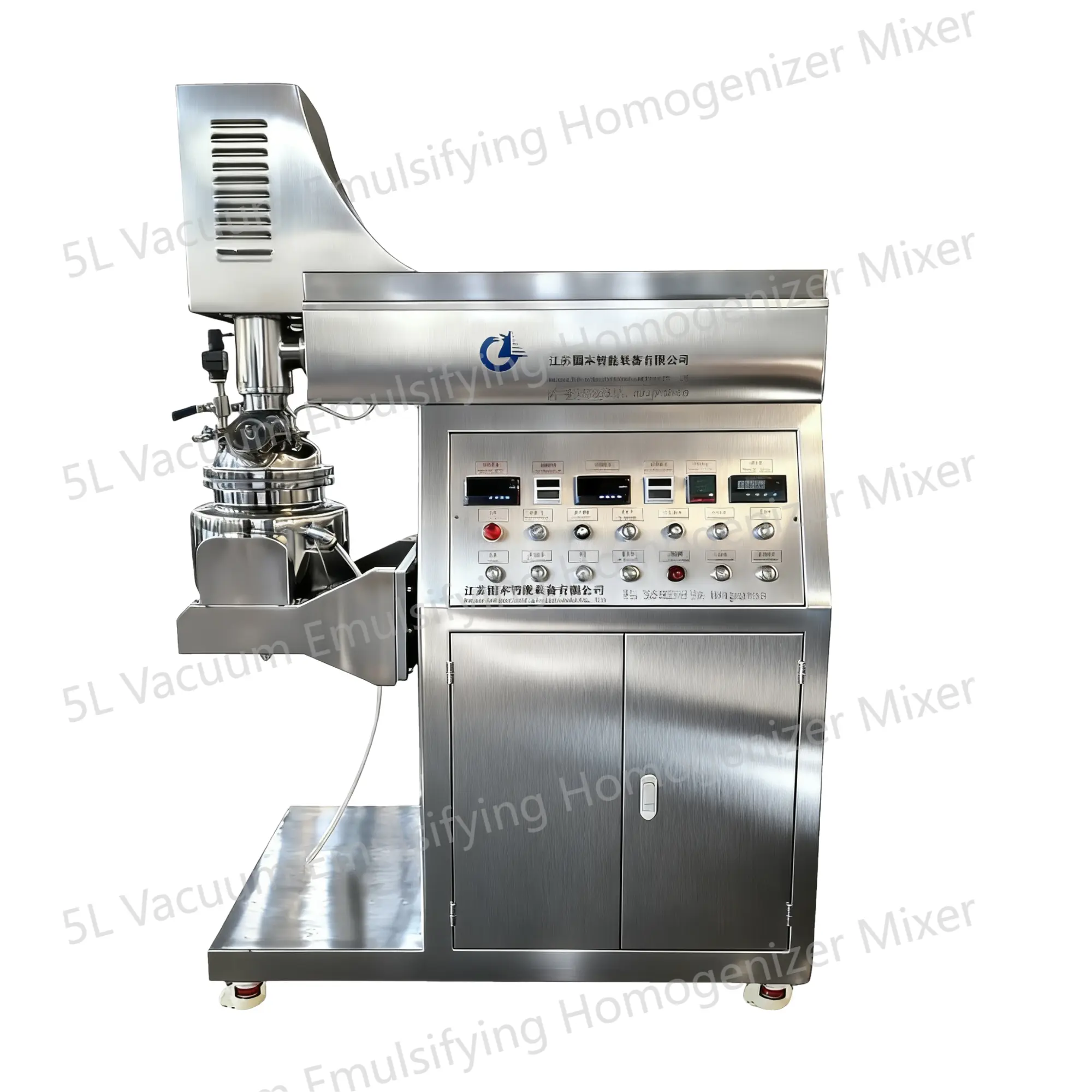 5L Vacuum Emulsifying Homogenizer Mixer
5L Vacuum Emulsifying Homogenizer MixerThe 5L vacuum emulsifying mixer is a device designed for emulsifying and mixing various substances in a vacuum environment. This equipment is equipped with a mixing tank with a capacity of 5 liters and is widely applied in industries such as food, pharmaceuticals, cosmetics, and pesticides.
-
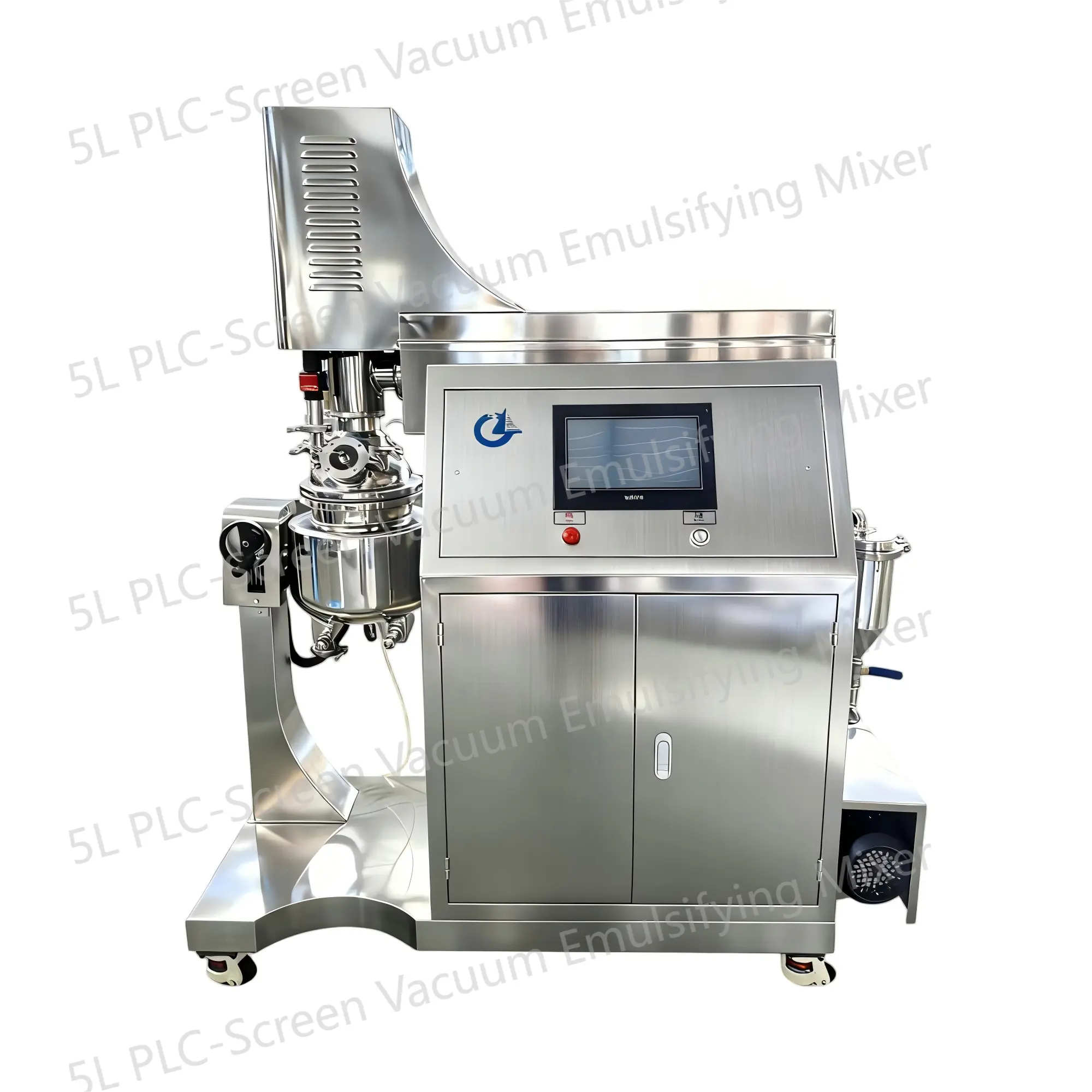 5L PLC-Screen Vacuum Emulsifying Mixer
5L PLC-Screen Vacuum Emulsifying MixerThe 5L PLC-Screen Vacuum Emulsifying Mixer is a device designed for emulsifying and mixing various substances in a vacuum environment. This equipment is equipped with a mixing tank with a capacity of 5 liters and is widely applied in industries such as food, pharmaceuticals, cosmetics, and pesticides.
-
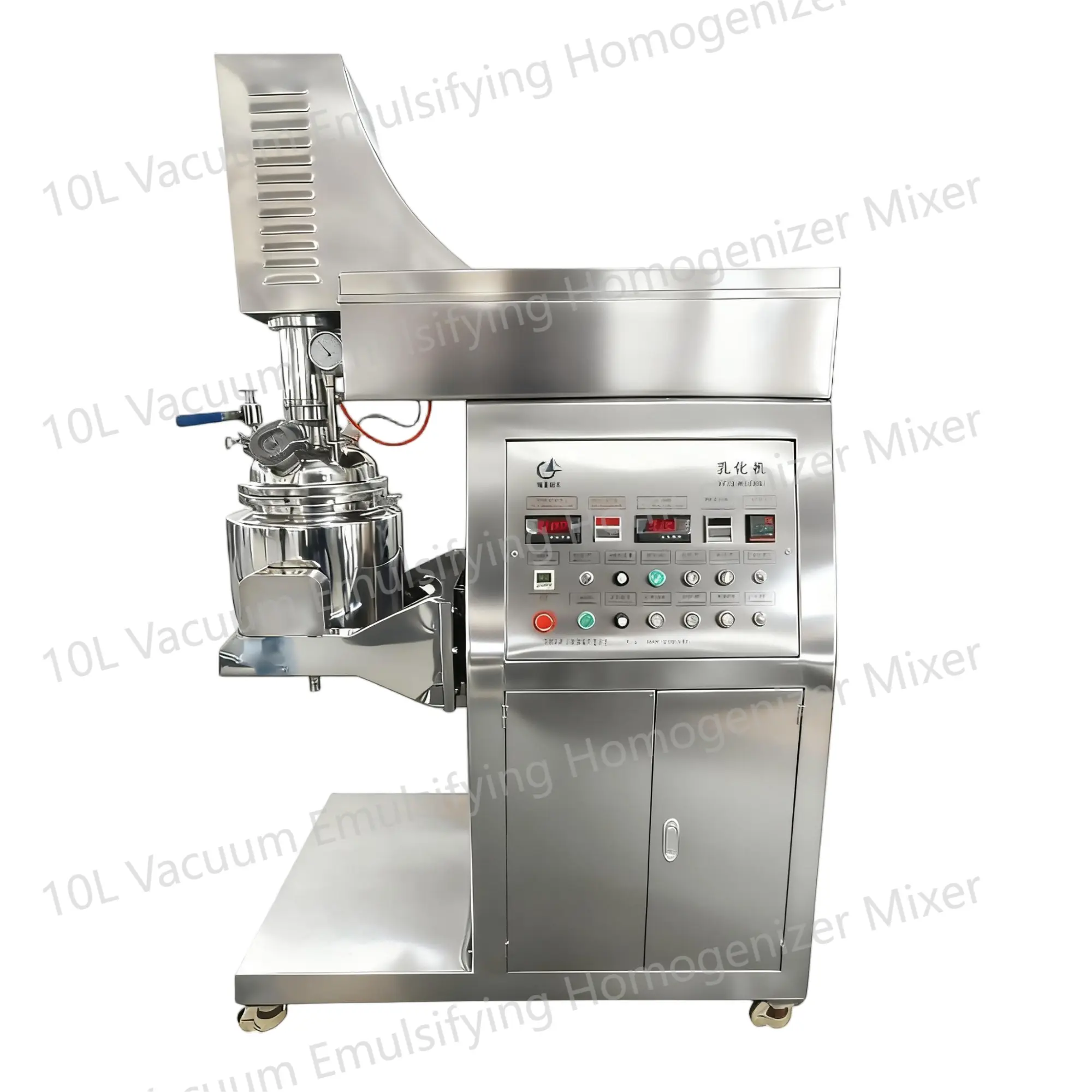 10L Vacuum Emulsifying Homogenizer Mixer
10L Vacuum Emulsifying Homogenizer MixerThe 10L Vacuum Emulsifying Mixer is a device used for emulsifying and mixing various substances in a vacuum environment. It is commonly used in industries such as food, cosmetics, and pharmaceuticals.


 English
English Russian
Russian French
French Spanish
Spanish Portuguese
Portuguese Korean
Korean Japanese
Japanese Thai
Thai